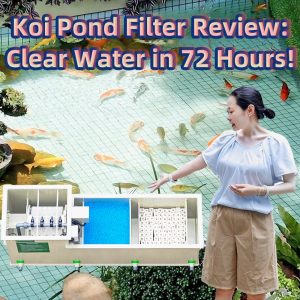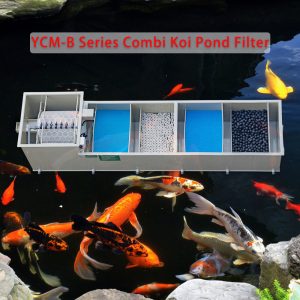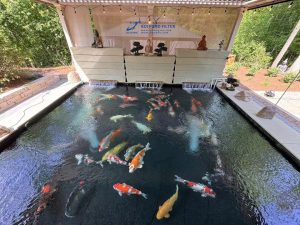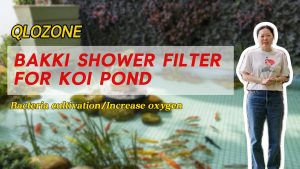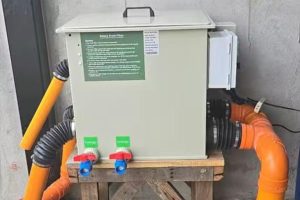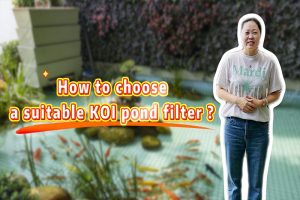Proper selection of pond filter equipment for a fish pond is a crucial step in creating a healthy and beautiful water feature. It directly affects the water quality, ecological balance, and survival quality of fish. Choosing the right filtration equipment that matches the size of the fish pond can effectively remove suspended particles, ammonia, nitrite, and other harmful substances, while promoting microbial activity and maintaining the ecological balance of the water body. Here are several important aspects to consider when selecting filtration equipment for a fish pond:
Assessment of Basic Fish Pond Conditions
The volume and shape of the fish pond: First, determine the actual capacity of the fish pond, which is the basis for calculating the flow rate of the filtration system. Additionally, knowing the shape of the fish pond (circular, rectangular, or other special shapes) helps determine the location of the fish pond filtration equipment.
Types and Number of Fish: Different types of fish produce different amounts of waste, so the biological load must be estimated based on the type and density of the fish, in order to determine the capacity and size of the filtration system.
Location and climate conditions: Consider the temperature, precipitation, etc. of the area where the pond is located, as these factors will affect the rate of evaporation of water, the introduction of pollutants, and the speed of algae growth.
Pond filter type selection
Common fish pond filtration equipment mainly has three basic types of physical filtration, chemical filtration and biological filtration, and the actual use is often combined with a variety of ways for composite filtration.
Physical filtration: Through the sand, gravel, foam or filter and other media to intercept suspended particles and impurities in the water, is the most basic filtration means.
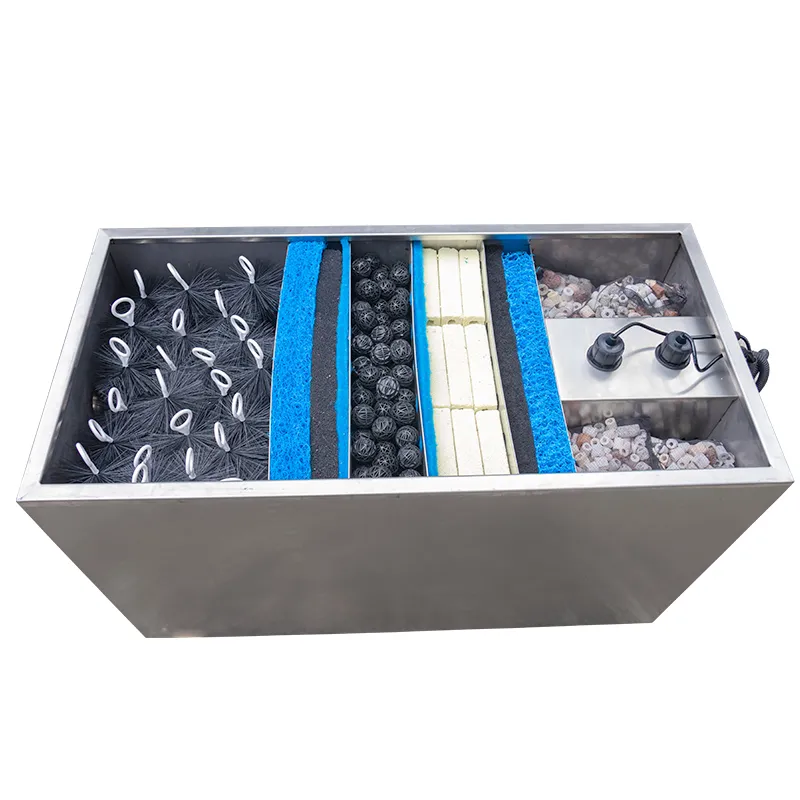
Biological filtration: The use of bacteria to decompose organic matter, especially the conversion of harmful ammonia and nitrite into less toxic nitrate, is a key link in the long-term maintenance of good water quality.
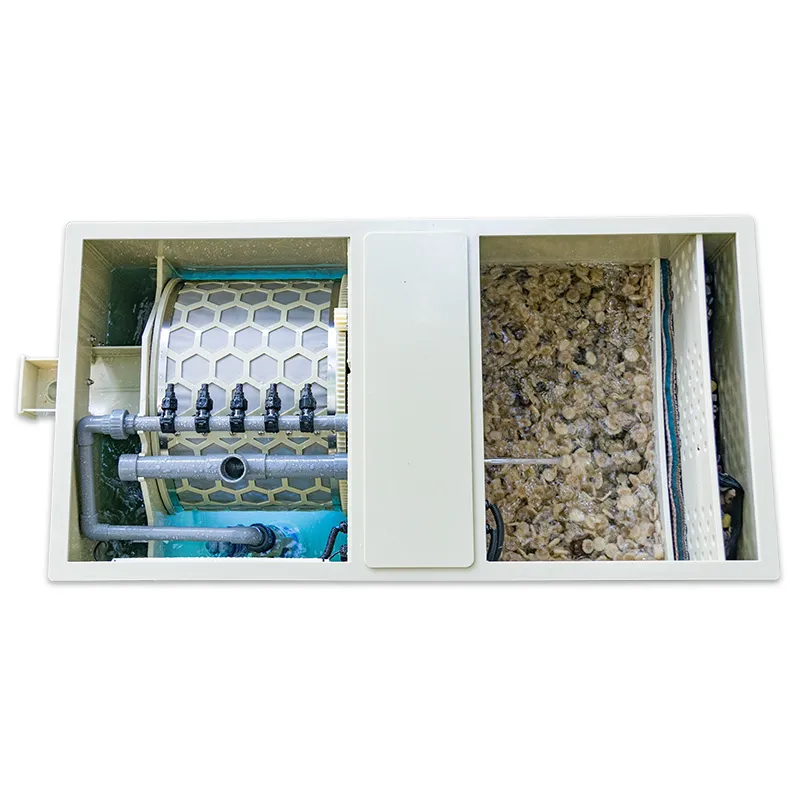
Chemical filtration: Through activated carbon, zeolite and other adsorbents to remove drug residues, pigments and other dissolved pollutants in water, improve water transparency and color.
Filter specifications and performance specifications
Flow and power: Ensure that the rated flow rate of the filtration equipment is at least equal to the number of turns of the total volume of the fish pond, which is usually recommended to turn 6-8 times per day. Power selection, not only to meet the maximum flow needs, but also to consider energy efficiency and noise levels.
Durability and maintenance ease: Choose brands and models that are strong and easy to clean and maintain to reduce later operating costs.
Guangzhou Qili Environmental Equipment Co,LTD, was founded in 2015, focus on research and development of aquaculture and landscape watertreatment.the first manufacturer of KOl pond filtration eouinment rom china.Dedicated to the research and practie ofkoibreedine area,provide one-ston fish ponds,water treatmentequipment and overall solutions!
The factory is located in Baiyun District,Guangzhou city. We obtained high-tech enterprises, 1s09001,cE, Rohs certificate,With independent design anddevelopment departments, a number of complete independent production lines; Strictly in accordance with scientific and moderm production methods to ensurethe stable output of high-quality products, professional after-sales team; eficiently provide customers with quality products!
Business covers all the country, with thousands of application sites, provide lifelong technical support; undertake fish pond purification designlandscape water system, water treatment solutions and manufacture, and provide 0EM and ODM cooperation!
Automation and intelligence: Modern fish tank filtration systems are often equipped with automatic backwashing, remote monitoring and other functions, which can greatly simplify daily management work and improve the reliability and efficiency of system operation.
Installation and layout points
Reasonable layout: Arrange the location of the filtration equipment according to the shape of the fish pond, the slope of the ground and the existing facilities, and reduce the length and bending of the pipeline as much as possible to reduce the energy loss.
Backup system: Consider setting up an emergency filtration unit or backup power supply in case of a sudden failure of the main system to ensure the continuous and stable operation of the fish pond ecosystem.
Regular inspection and debugging: Establish a complete maintenance plan, regularly check the status of the filter media, clean up the blockage, supplement the active substance, adjust the equipment parameters, and ensure that the system is in the best working condition.
In summary, the selection of fish tank filtration equipment is a systematic project, involving many technical details and practical experience. It is recommended that under the guidance of professionals, comprehensive assessment and detailed planning should be carried out according to the specific situation, in order to achieve the best water quality management and ornamental effect.

